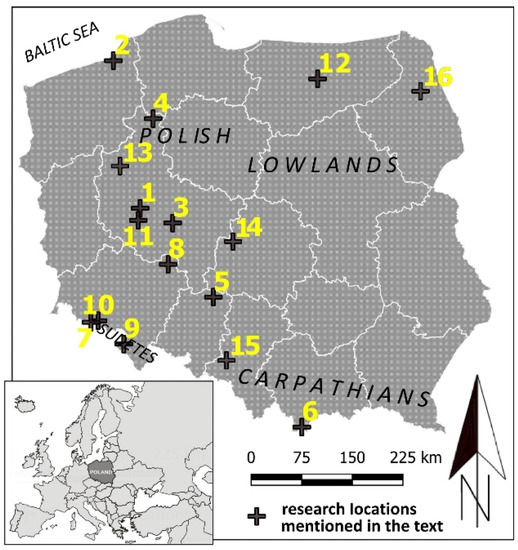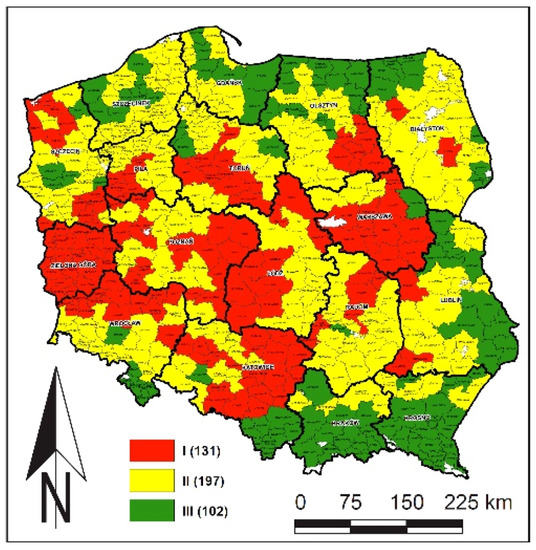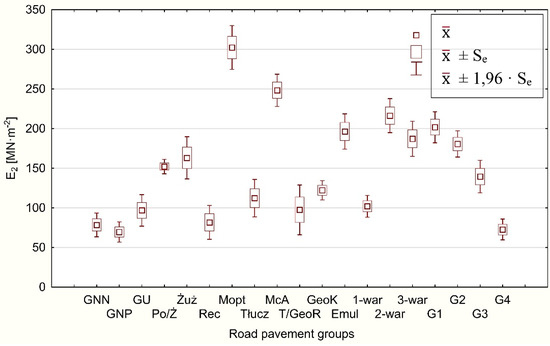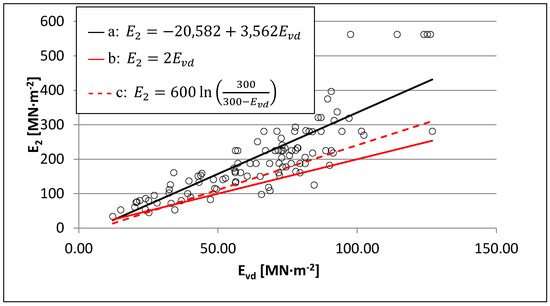The entry presents some significant issues related to the fire protection infrastructure in forests. In every forest complex a sufficiently dense network of fire roads is an extremely important element of the fire protection system. The requirements to identify roads as fire roads within the forest communication network and to maintain their condition up to a certain technical standard has been briefly explained.
The article presents some significant issues related to the fire protection infrastructure in forests. In every forest complex a sufficiently dense network of fire roads is an extremely important element of the fire protection system. The requirements to identify roads as fire roads within the forest communication network and to maintain their condition up to a certain technical standard has been briefly explained.
- fire roads,
- road network density optimization
- fire road surface
- load-bearing capacity
1. Introduction
At present, the forested area in Poland exceeds 9.2 million ha and is steadily increasing, from 21% of the country’s land area in 1945 to 29.6% currently [1]. The vast majority of forests are state-owned, of which over 7.3 million ha are administered by the State Forests—National Forest Holding (in short: State Forests). The State Forests’ core activity is sustainable forest management. The areas administered by the State Forests are accessible and forest products, such as berries and mushrooms, may be freely picked there. The State Forests represent the State Treasury of Poland and act on its behalf in property management. The organization also controls timber harvesting in private forests. The State Forests closely cooperate with research institutions both in the field of environmental protection and forest management. Especially in the current climate conditions characterized by long periods of rainfall shortage and, on the other hand, extreme weather events (torrential rainfall, storms), often with catastrophic effects (floods, fires, landslides), cooperation between forest management professionals and scientific communities is extremely important [2][3][4][5][6][7][8][9][10][11]. Such joint work enables the active seeking for practical ways to prevent negative climatic phenomena and to contribute to the mitigation of their effects.
In the field of forest engineering, the primary research directions inherent in preventing and mitigating the impacts of adverse climatic and weather conditions on the forest environment currently conducted for the State Forests are related to forest firefighting infrastructure (fire roads, forest landing fields, water intake points), water management in forests and eco-engineering.
Forest engineering methods are important elements of the forest environment support system; they are necessary for adapting forest road networks for fire-fighting purposes, planning and building infrastructure to reduce water outflow, increasing water retention in forests, and developing infrastructure that prevents the fragmentation of forest habitats and ecosystems. The article presents some significant research achievements enabling the protection of the forest environment and sustainable management of Polish forests in conditions of prolonged drought observed in Poland. The effects of a number of works on specific problems affecting selected regions of the country were shortly described; the locations of the presented projects are shown in Figure 1.

Figure 1. Map of Poland with locations of research areas mentioned in the paper: 1—Faculty of Forestry, Poznań University of Life Sciences; 2—Karnieszewice Forest District; 3—Jarocin Forest District and “Uroczysko Warta” floodplain forest; 4—Lipka Forest District; 5—Experimental Forest Unieszów; 6—Tatra Mountains National Park; 7—Karkonosze Mountains National Park; 8—Promotion Forest Complex of the Barycz River Valley; 9—Table Mountains National Park and Kłodzko Province; 10—Śnieżka Forest District; 11—Greater Poland National Park; 12—Wipsowo Forest District; 13—Noteć Forest; 14—Jeziorsko reservoir; 15—Rudy Raciborskie Forest District; 16—Biebrza National Park.
2. Forest Fire Protection
Forest fire protection is particularly important in the era of growing forest fire hazard as a consequence of the observed climate change. The forest fire protection system in Poland is complex and covers a number of activities: fire prevention, creation and maintenance of a surveillance and alarming system, specifying and implementing the organizational and technical measures enabling efficient access to the fire place and actions of the fire extinguishing forces. In Poland, forest fire protection depends on the category and degree of forest fire risk. The fire hazard category comprises forests with a similar level of susceptibility to fire, determined on the basis of the frequency of fires, climatic conditions, stand condition and anthropogenic factors. The degree of forest fire risk is determined for areas of the I and II fire hazard categories; it is carried out twice a day according to separate forecasting zones. One of the elements of improving the fire protection system in Polish forests is currently the optimization of forest communication network density and improving the load capacity parameters of forest roads acting as fire access roads.
One of the most tragic but also spectacular experiences confirming the great importance of forest road network for firefighting was the fire in the Rudy Raciborskie Forest District in 1992—the largest fire which has taken place in Poland and then in Central Europe since World War II. The fire lasted from 26 to 30 August and destroyed 9062 ha of forest area [12]. Currently, organizational units of the State Forests—National Forest Holding work on spatial optimization of road systems, also including their number, based on specially prepared forest road plans. As a result, forest districts are provided with a body of information to facilitate future operations. The main objective of these forest road plans is to precede investment processes with assessment of their economic rationale manifested, among other things, in planned management and protection operations. The road network is optimized by establishing the course of required roads, i.e., trunk roads, byways, access roads for machines, as well as matching maintenance and rehabilitation technologies adequate to the needs.
An extremely impFortant element of the fst fire protection infrastructure in everys particularly important in the era of growing forest complex is a sufficiently dense network of fire roadsfire hazard as a consequence of the observed climate change. The requirement to identify roads as fire roads within the forest road network and to maintain their condition up to a certain technical standard was introduced in the State Forests orforest fire protection system in Poland is complex and covers a number of activities: fire prevention, creation and maintenance of a surveillance and alarming system, specifying and implementing the organizational units by the “Instruction on fire protection in forested areas” of 1996 and 2020 [13][14]. Tand teche information and requirements included in the instruction resulted, among others, from research carried out by the authors of the current paper. It was established that the distance between any point located in the forest and the nearest public road (excluding highways and express roads) or a ical measures enabling efficient access to the fire place and actions of the fire extinguishing forces. In Poland, forest fire protection depends on the category and degree of forest road classified as a fire road should not exceed 0.75 or 1.50 km depending on the adopted fire risk. The fire hazard category for a givencomprises forest (Figure 2)s with a [15][14][16][17]. Fsimilare roads also serve the function of the primary grid for the transportation network necessary to carry out all tasks in a given forest complex. According to data from 2015, within the area administered by the State Forests there are almost 107,000 km o level of susceptibility to fire, determined on the basis of the frequency of fires, climatic conditions, stand condition and anthropogenic factors. The degree of forest roads, of which as much as 47% serve the function of fire roadsfire risk is determined [18][19]. Transpfort problems observed in Polish forests resulted not from a lack of roads, since their density indexes were relatively high and comparable with those of other European countries, but rather from the very low percentage of paved roads [18][19]. Thareas of the I and II fire hazard categories; it is carried out twice a day according to separate forecasting zones. One of the elements of improvisng has facilitated a considerable investment on thethe fire protection system in Polish forest road infrastructure being made in the following years.

Figure 2.s is currently Assthessment of potential fire hazard in Polish optimization of forests according to forest district (I, II, III—categorie communication network density and improving the load capacity parameters of forest fire hazard, as of 31 December 2018).
Aroads acting present, research in the Departmas fire access roads.
Onent of Forest Engineering focuses on the verification of current regulations of public law and specific professional guidelinthe most tragic but also spectacular experiences concerning fire roads in relation to the requirements to be met for currently used firming the great importance of forest road network for firefighting and rescue vehicles of fire brigades, as well as applied tactics and technologies of forest firefightingwas the fire in the Rudy Raciborskie Forest District in [20][21]. T1992—these refer in particular to:
-
Optimization of road network density and geometrical parameters of forest roads, including fire roads [18][19][20]. The high construction costs of many kilometers of forest roads cause the need to optimize their density and geometrical parameters as well, while adapting to requirements on effective and safe rescue operations.
-
Tests of load-bearing capacity of forest fire roads—the existing ones, as well as the newly built ones (Figure 3). The variability of fire roads capacity parameters is still significant and in many cases insufficient; this applies first of all to dirt road surfaces and roads built on loose substrate (G3, G4) [20][22].
-
Changes in the parameters of bearing capacity of forest road surfaces due to heavy rainfall [21][23]. Recognizing the risk of road serviceability loss caused by excessive humidity of road sub-grade and unbound layers of road construction, together with counteracting techniques, is an important direction of research nowadays, when an increase in the frequency of extreme weather events is observed.
-
Development of new technologies increasing the load-bearing capacity of road surfaces (additional discussion of this issue further in the text).
-
Improvement of supervision methods and commissioning of intensively constructed and redeveloped surfaces of fire roads. This applies to, among other things, searching for relationships between the results of load-bearing capacity tests carried out with the use of static plates, and the results of measurements taken with light falling weight deflectometers (Figure 4). Success in this area would give rise to a reduction or even the elimination of widely used, but time-consuming and uncomfortable to operate, load capacity tests with static plates for quick measurements with light dynamic plates.

Figure 3. Stlargest fire which hatistical characteristics of constrained modulus during secondary compression (E2) according to groups of surfaces in fire roads (GNN: ungraded dirt road; GNP: graded dirt road; GU: improved dirt road surface; Po/Ż: gravelly sand or gravel taken place in Poland and then in Central Europe since World War II. The fire lasted from 26 to 30 August and destroyed 9062 ha of forest area [75]. sCurfaces; Żuż: slag surfaces (blast furnace slag); Rec: surfaces of recycled aggregates (concrete debris, construction rubble, brick debris, rail subgrade crusher-run materials); Mopt: optimal dirt mix surfaces; Tłucz: crushed-stone aggregaterrently, organizational units of the State Forests—National Forest Holding work on spatial optimization of road surfaces; McA: macadam surfaces; T/GeoR: aggregate surfaces on geogrid; GeoK: geogrid surfaces; Emul: asphalt surfaced aggregate pavements; 1-war: single-layer surfaces; 2-war: 2-layer surfaces; 3-war: min. 3-layer surfaces; G1, G2, G3, G4: fire roads with G1, G2, G3 and G4 subgradesystems, also including their number, based on specially prepared forest road plans. As a result, forest districts are provided with a body [20].

Figure 4.of Estinformation of the static constrained modulus during secondary compression (E2) bato facilitate future operationsed. on values of dynamic constrained modulus (Evd) aThe main objeccordting to: (a) the original model of linear regression (proposed in [20]); (b) simve of these forest road plified coanversion of Evd ins is to E2 occasionally applied in practice; (c) the formula admissible in case of no data on other dependencies between Evd and E2 [24], ecede investment processes win view ofth measurements of load-bearing capacity taken using a static plate on 109 different types of fire road surfaces [20].
The functiassessment of their economic rationale manifested, amoning of the fire protection system in Polish forests may be considered highly effective. The mean area affected by a single fire in Poland is relatively small and shows a downward trend [23]ther things, in planned management and protection operations. The mean area of a single fire in forests administered by the State Forests, coveroad network is optimized by establishing the main organizational and financial burden of fire protection in Polish forests, is almost twice as smacourse of required roads, i.e., trunk roads, byways, access roads for machines, as well as in private forestsmatching maintenance [25]. Iand relhabilitation to climate change affecting Poland, it is necessary to intensify actions minimizing fire hazard in forestechnologies adequate to the needs.

-
Optimization of road network density and geometrical parameters of forest roads, including fire roads [81,82,83]. The high construction costs of many kilometers of forest roads cause the need to optimize their density and geometrical parameters as well, while adapting to requirements on effective and safe rescue operations.
-
Tests of load-bearing capacity of forest fire roads—the existing ones, as well as the newly built ones (Figure 2). The variability of fire roads capacity parameters is still significant and in many cases insufficient; this applies first of all to dirt road surfaces and roads built on loose substrate (G3, G4) [83,85].
-
Changes in the parameters of bearing capacity of forest road surfaces due to heavy rainfall [84,86]. Recognizing the risk of road serviceability loss caused by excessive humidity of road sub-grade and unbound layers of road construction, together with counteracting techniques, is an important direction of research nowadays, when an increase in the frequency of extreme weather events is observed.
-
Development of new technologies increasing the load-bearing capacity of road surfaces (additional discussion of this issue further in the text).
-
Improvement of supervision methods and commissioning of intensively constructed and redeveloped surfaces of fire roads. This applies to, among other things, searching for relationships between the results of load-bearing capacity tests carried out with the use of static plates, and the results of measurements taken with light falling weight deflectometers (Figure 3). Success in this area would give rise to a reduction or even the elimination of widely used, but time-consuming and uncomfortable to operate, load capacity tests with static plates for quick measurements with light dynamic plates.


- Instrukcja Ochrony Przeciwpożarowej Obszarów Leśnych 1996; Dyrekcja Generalna Lasów Państwowych: Warsaw, Poland, 1996.
- Instrukcja Ochrony Przeciwpożarowej Obszarów Leśnych 2020; Dyrekcja Generalna Lasów Państwowych: Warsaw, Poland, 2020.
- Haze, M. (Ed.) Instrukcja Ochrony Przeciwpożarowej Lasu; Załącznik do Zarządzenia nr 54 Dyr. Generalnego Lasów Państwowych z 21 listopada 2011 r. OB. 1.01. 2012; CILP: Warsaw, Poland, 2011. [Google Scholar]
- Rozporządzenie Ministra Środowiska z dnia 22 marca 2006 r. w sprawie szczegółowych zasad zabezpieczenia przeciwpożarowego lasów; Dz. U. z 2006 r. nr 58 poz. 405; Rządowe Centrum Legislacji: Warsaw, Poland, 2006.
- Rozporządzenie Ministra Środowiska z dnia 13 lipca 2015 r. zmieniające rozporządzenie w sprawie szczegółowych zasad zabezpieczenia przeciwpożarowego lasów; Dz. U. z 2015 r. nr 0 poz. 1070; Rządowe Centrum Legislacji: Warsaw, Poland, 2006.
- Czerniak, A.; Gornowicz, R.; Miler, A.T.; Trzciński, G.; Grajewski, S.M.; Kapuścińska, J. Planowanie sieci Dróg Leśnych i Składnic oraz Optymalizacja Wskaźników Gęstości Dróg Leśnych dla Różnych Terenów Polski; Sprawozdanie końcowe z realizacji tematu zleconego przez Dyrekcję Generalną Lasów Państwowych w Warszawie; Maszynopis Katedra Inżynierii Leśnej UPP: Poznań, Poland, 2016. [Google Scholar]
- Trzciński, G.; Czerniak, A. Stan techniczny dróg leśnych—Potrzeby remontowe. Sylwan 2017, 161, 539–547. [Google Scholar]
- Grajewski, S.M. Funkcjonalność Leśnych Dojazdów Pożarowych Względem Wymogów Współczesnych Pojazdów Ratowniczo-Gaśniczych oraz Aktualnie Stosowanych Taktyk i Technologii Gaszenia Pożarów Lasów; Rozprawy Naukowe 511; Wyd. UP w Poznaniu: Poznań, Poland, 2019. [Google Scholar]
- Grajewski, S.M.; Czerniak, A.; Szóstakowski, P. Features and performance of forest fire access roads and fire department connections as assessed by employees of the Polish State Fire Service. Saf. Fire Technol. 2019, 53, 68–87. [Google Scholar] [CrossRef]
- Grajewski, S.M.; Czerniak, A. Wykorzystanie lekkiej płyty dynamicznej do kontroli robót drogowych prowadzonych w lasach. Przegląd Leśniczy 2015, 10, 10–11. [Google Scholar]
- Grajewski, S.M. Wieloletnia zmienność pożarów lasu w wybranych 28 krajach Europy Kanadzie i USA. BiTP 2017, 3, 46–58. [Google Scholar]
- Grajewski, S.M. Effectiveness of forest fire security systems in Poland. Infrastrukt. Ekol. Teren. Wiej. 2017, 4, 1563–1576. [Google Scholar]
- Livneh, M.; Goldberg, Y. Quality assessment during road formation and foundation construction: Use of falling-weight deflectometer and light drop weight. J. Transp. Res. Board 2001, 1755, 69–77. [Google Scholar] [CrossRef]
 Encyclopedia
Encyclopedia

